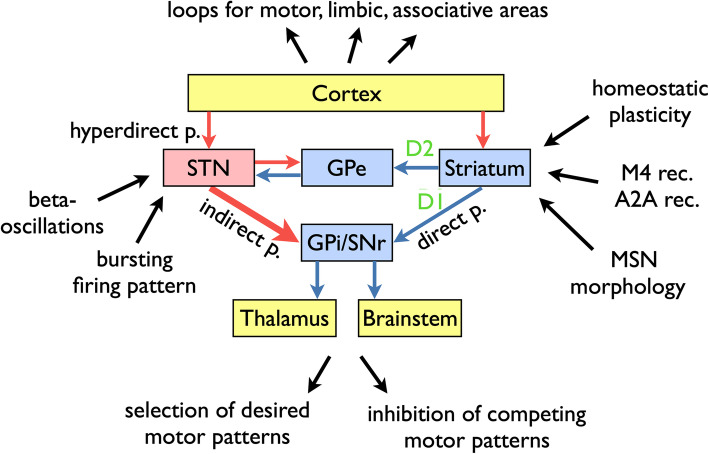Fig. 4.
Schematic representation of the basal ganglia circuitry and changes observed in PD patients and models. Distinct loops exist for motor, limbic and associative circuitry. The basal ganglia disinhibit desired motor patterns and inhibit competing motor patterns. The circuitry includes the direct pathway from striatum to GPi/SNr, gated by D1 dopamine receptors, the indirect pathway through GPe and STN, gated by D2 dopamine receptors, and the hyperdirect pathway from cortex to STN. The striatal circuitry is modulated in addition by M4 muscarine and A2A adenosine receptors. In PD, changes occur not only in the firing rate (in particular increased rate of STN firing), but also in the firing patterns, notably the pathological beta-oscillation and increased firing in bursts. Chronic dopamine deficiency leads to the (homeostatic) changes in MSN excitability and morphology. Display of circuitry inspired by Hutchison et al., 2004 [91]. Blue arrows indicate GABAergic projections, and red arrows indicate glutamatergic projections. Abbreviations: p, pathway; rec., receptor; STN, subthalamic nucleus; GPe, globus pallidus pars externa; GPi, globus pallidus pars interna; SNr, substantia nigra pars reticulata; MSN, medium spiny neurons

